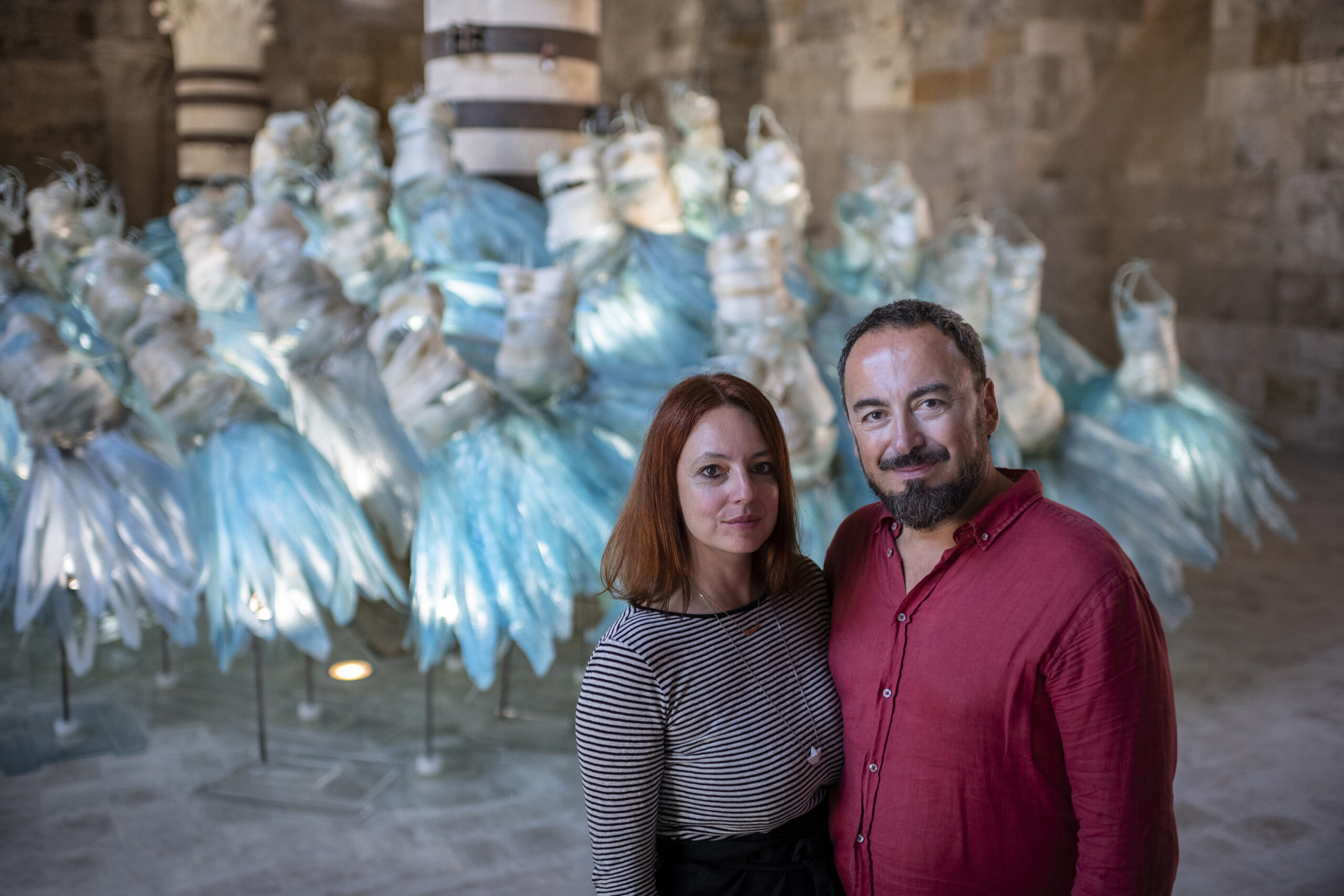Davide Dall’Osso
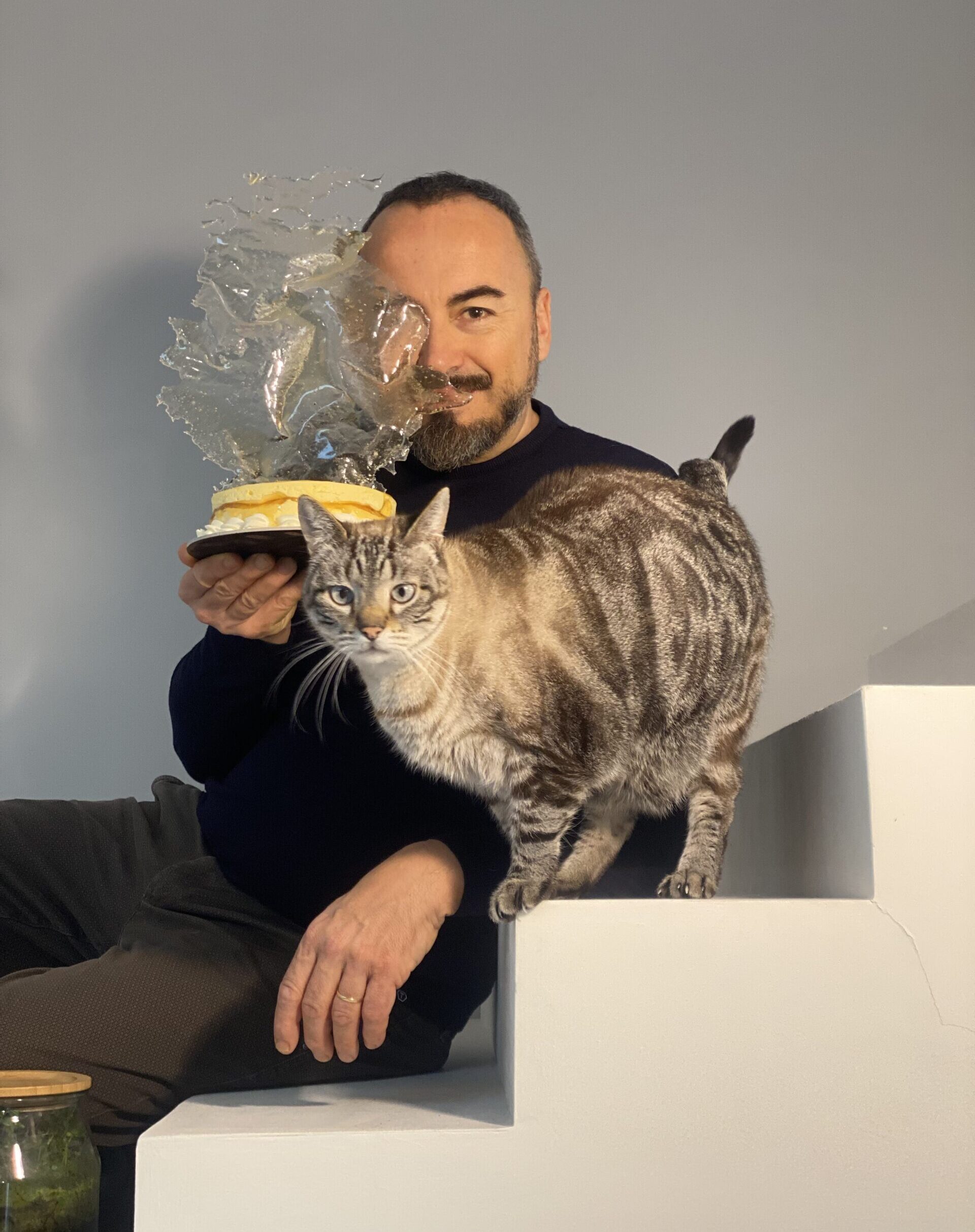
photo credit: Maria Vittoria Gozio
It’s a curiosity how Italian artist Davide Dall’Osso illuminates this sense of freedom, movement and power, enlightening the idea of the spirited in his sculptures. The dance of the ballet dresses, the recreation of the magnificence of movement, the power and force of freedom of thought, the endurance of the human spirit, the connection of souls, the strength of the human face and the force and fragility of horses and our relationship with them. The sculptures, that he has created from industrial polycarbonate scrap, are a recreation of all that was considered no longer sustainable. It could be a metaphor for the evolving history of humanity; he uses an example and describes the power of the horse, “Horses have marked the path for man and represent the unique relationship we have with them.” The method of his work highlights the desire for liberty and strength, and the need to be connected, by observing human nature and embracing our differences. This is marked in our conversation with his experiences of what he observes and within our fears of the different and our desires to be free, and how they can be conflicting. His artworks transform the ordinary of the mundane, an invention by mankind to create disposable goods, and the impact this has had on our environment. To translate the language and create an artwork that reflects our deepest longings, whether it’s his giant translucent sculptures that appear to dance with the wind, or the metaphors of layers in our complexity. It is the fragility of our existence, all existing in the perfect ratio and balance with nature and how the desire to conquer disables that perfect balance.
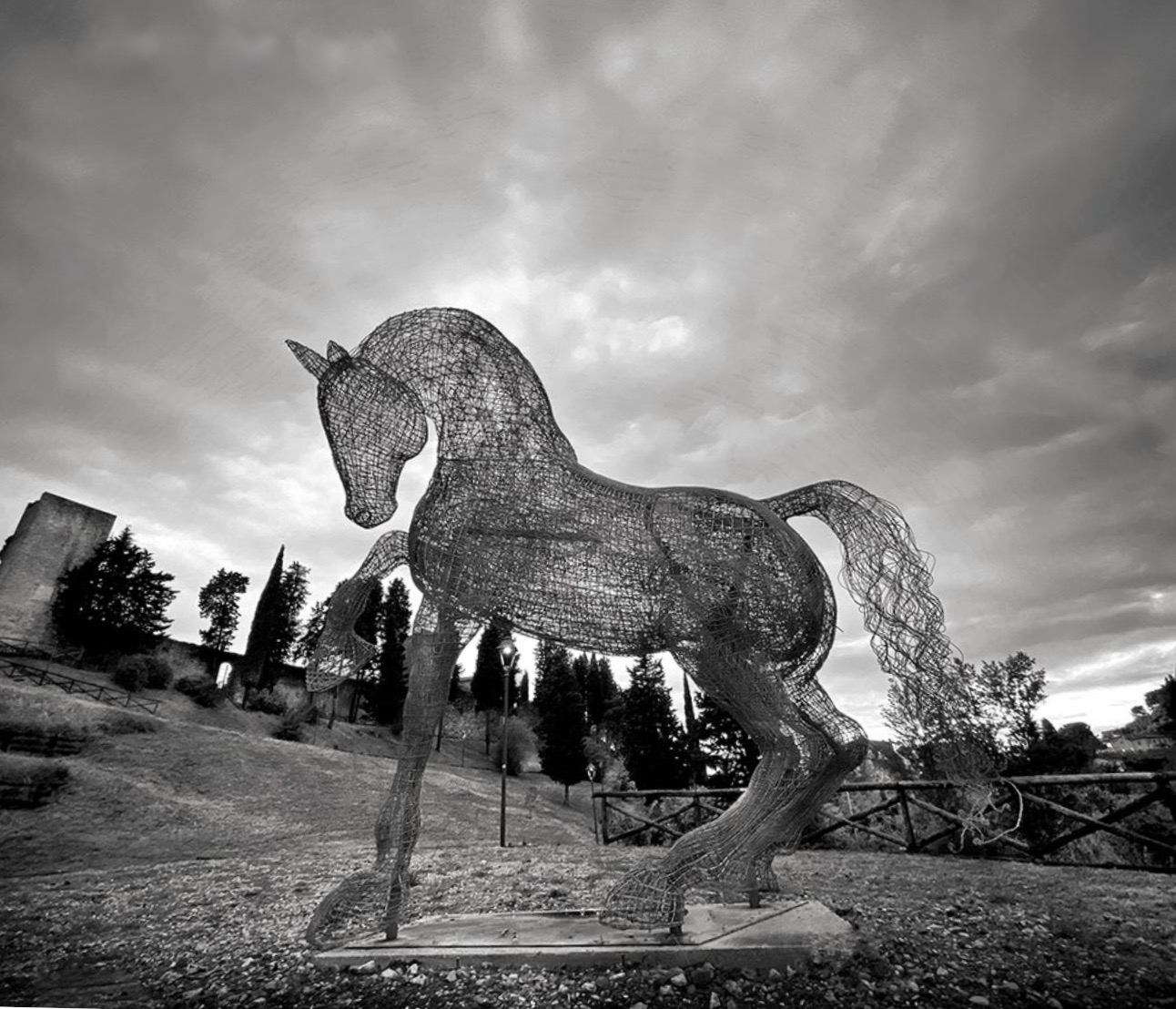
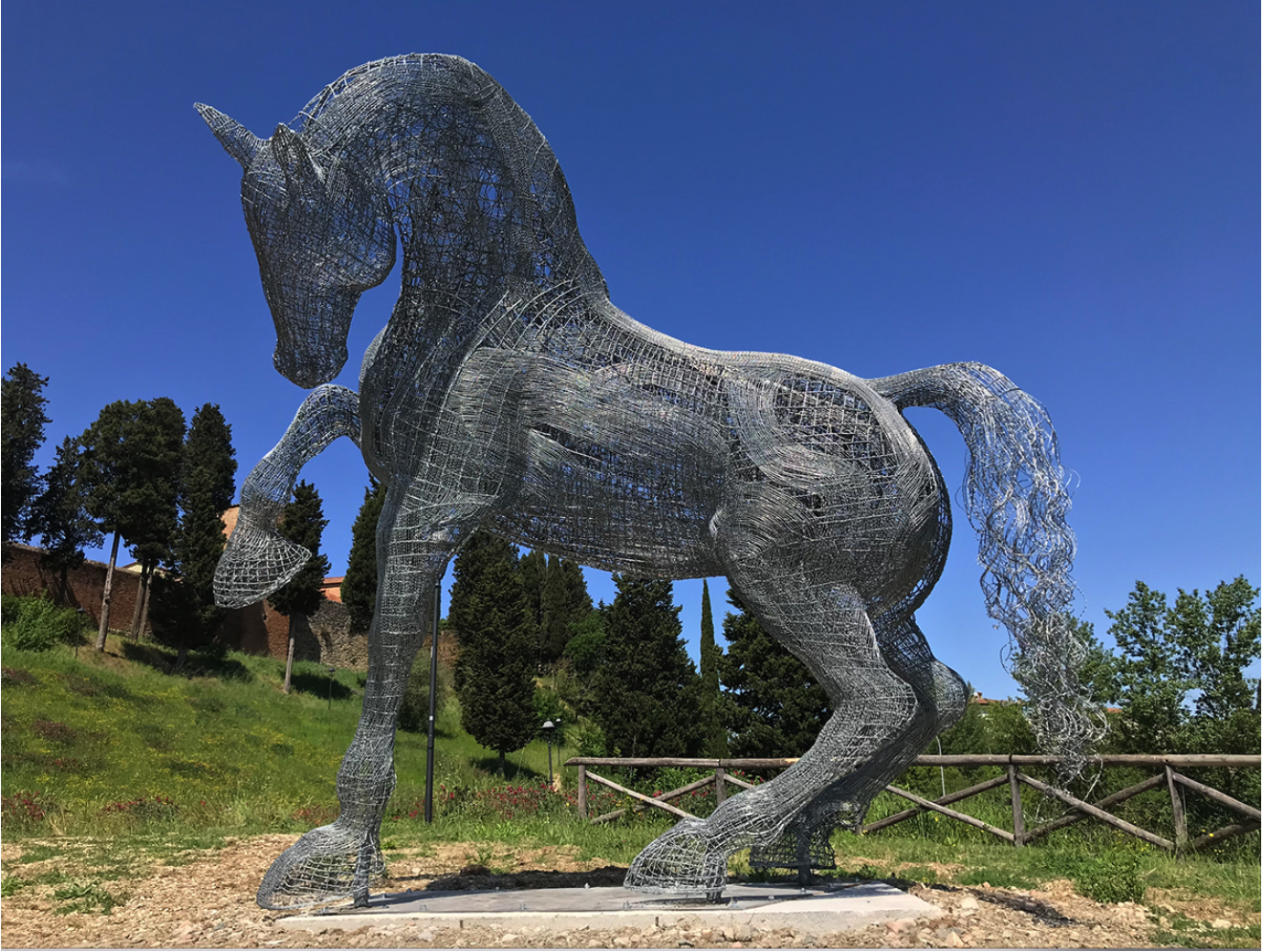


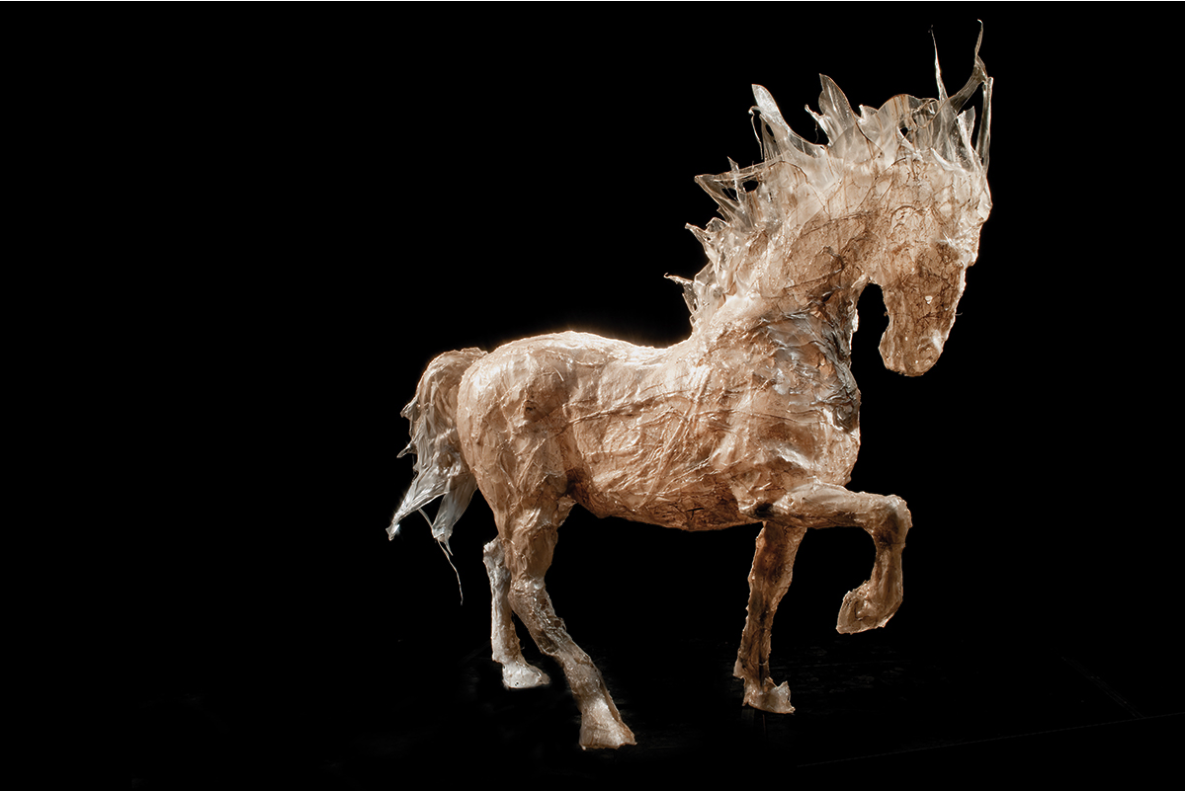
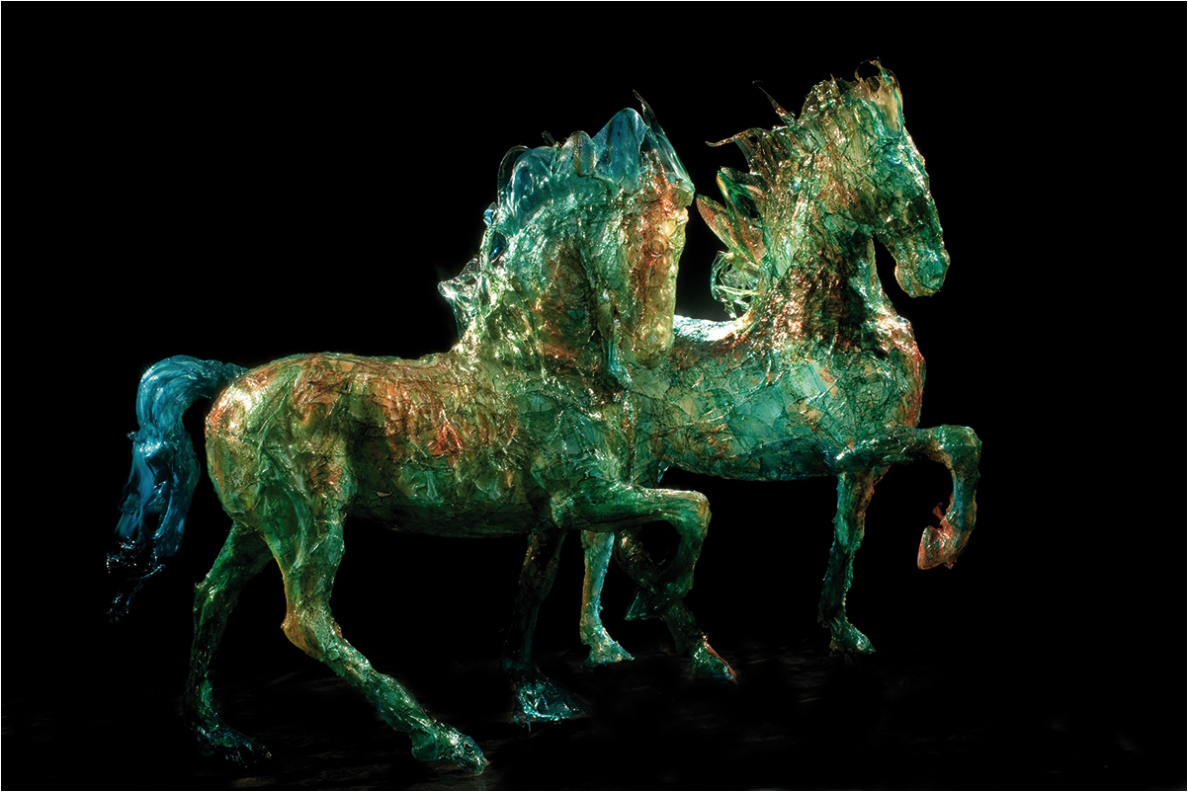
We talk about his inspirations with his horses, to my surprise, Davide tells me he only sat on a horse once. His appreciation for the magnificence of the animal is humanity’s success primarily due to the horse which we used for centuries, and he illustrates humanity owes its appreciation to the horse and what we have accomplished due to the horse. He emphasises our connection with horses and our relationship with them as being transmitted through the memory of our genetics. “It’s not random, that we have had a relationship with horses for a very long time”. He represents the qualities of the horse, strength, freedom, liberty, and also fragility through the sculptures he creates.
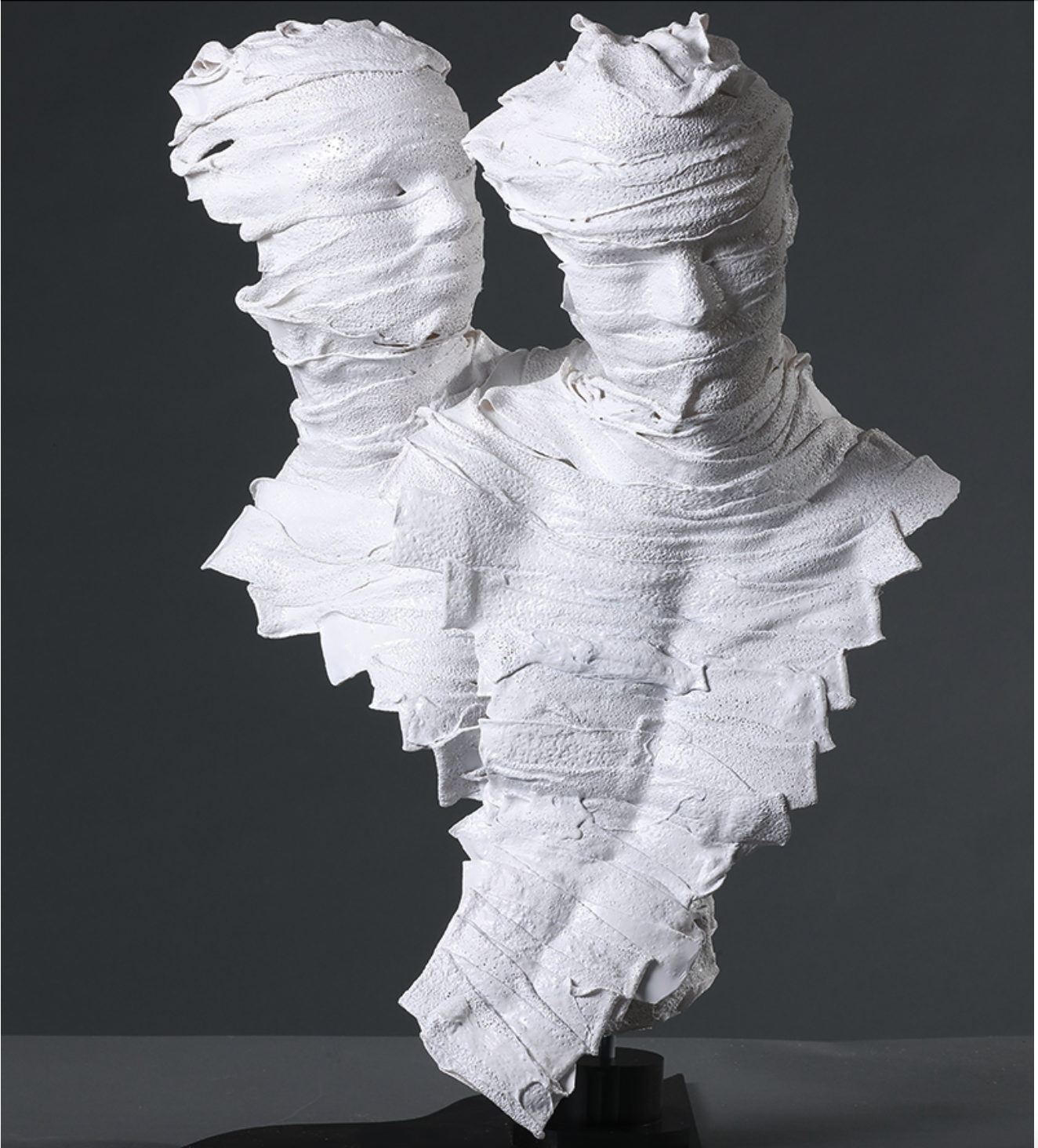
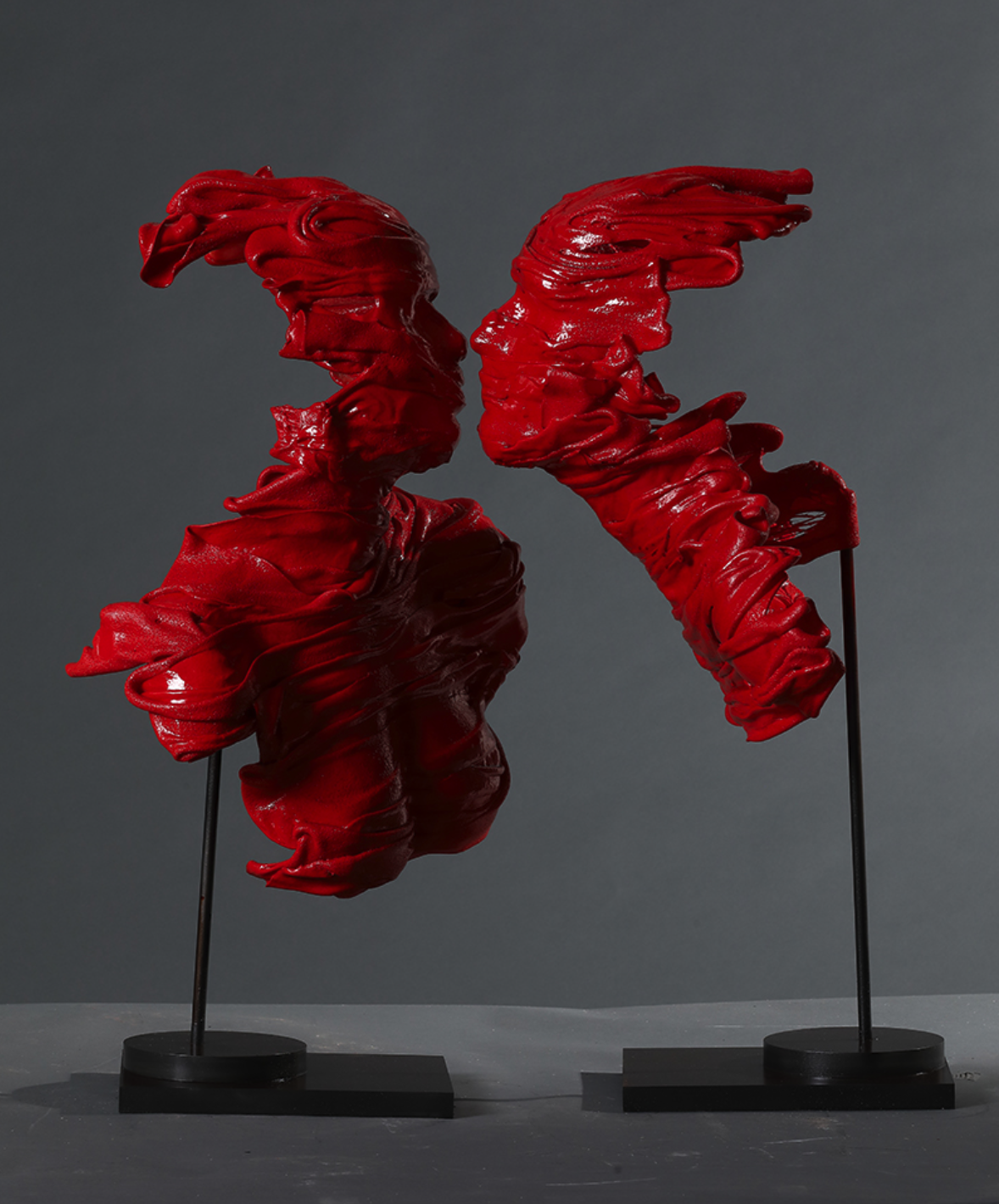
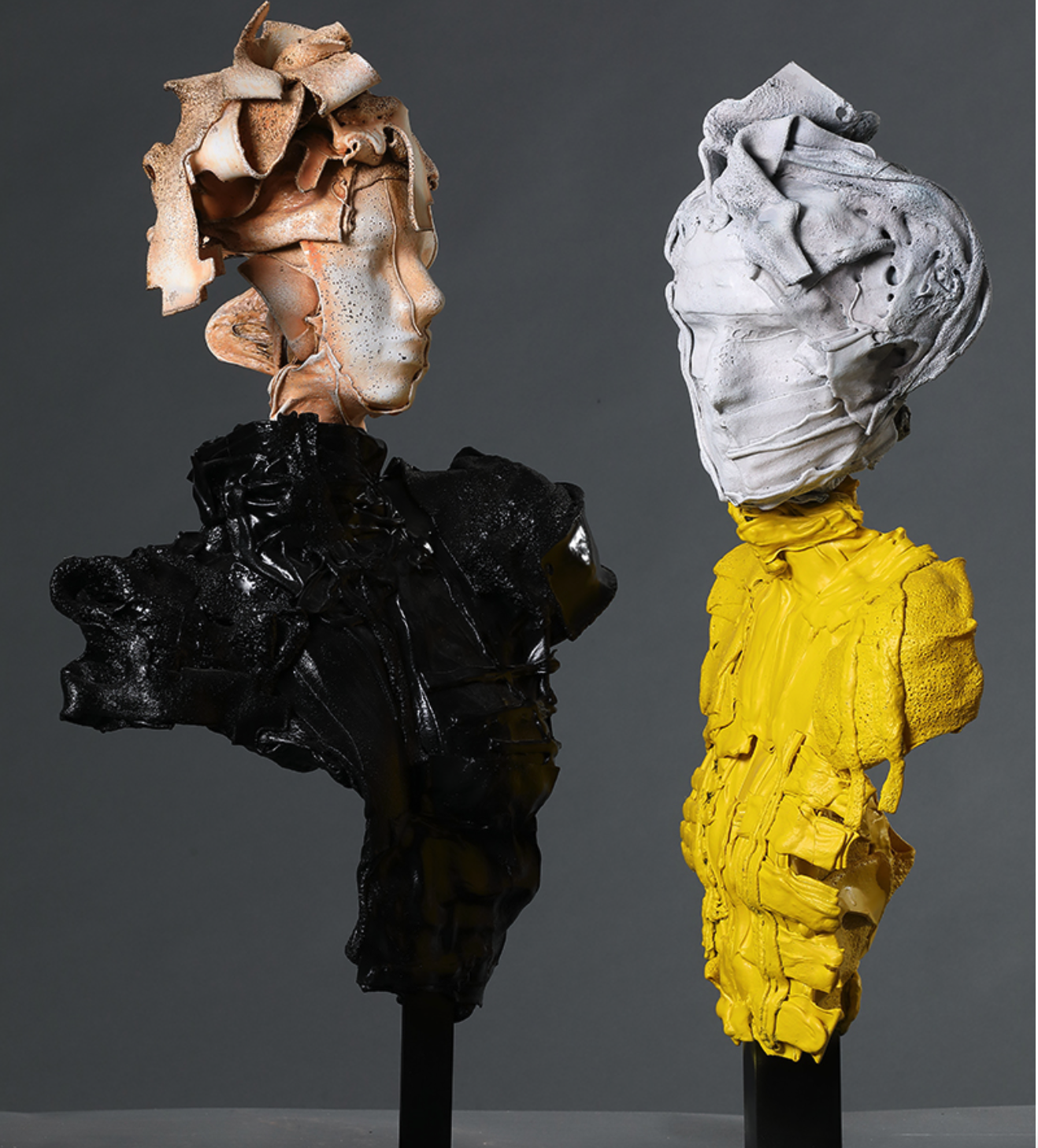

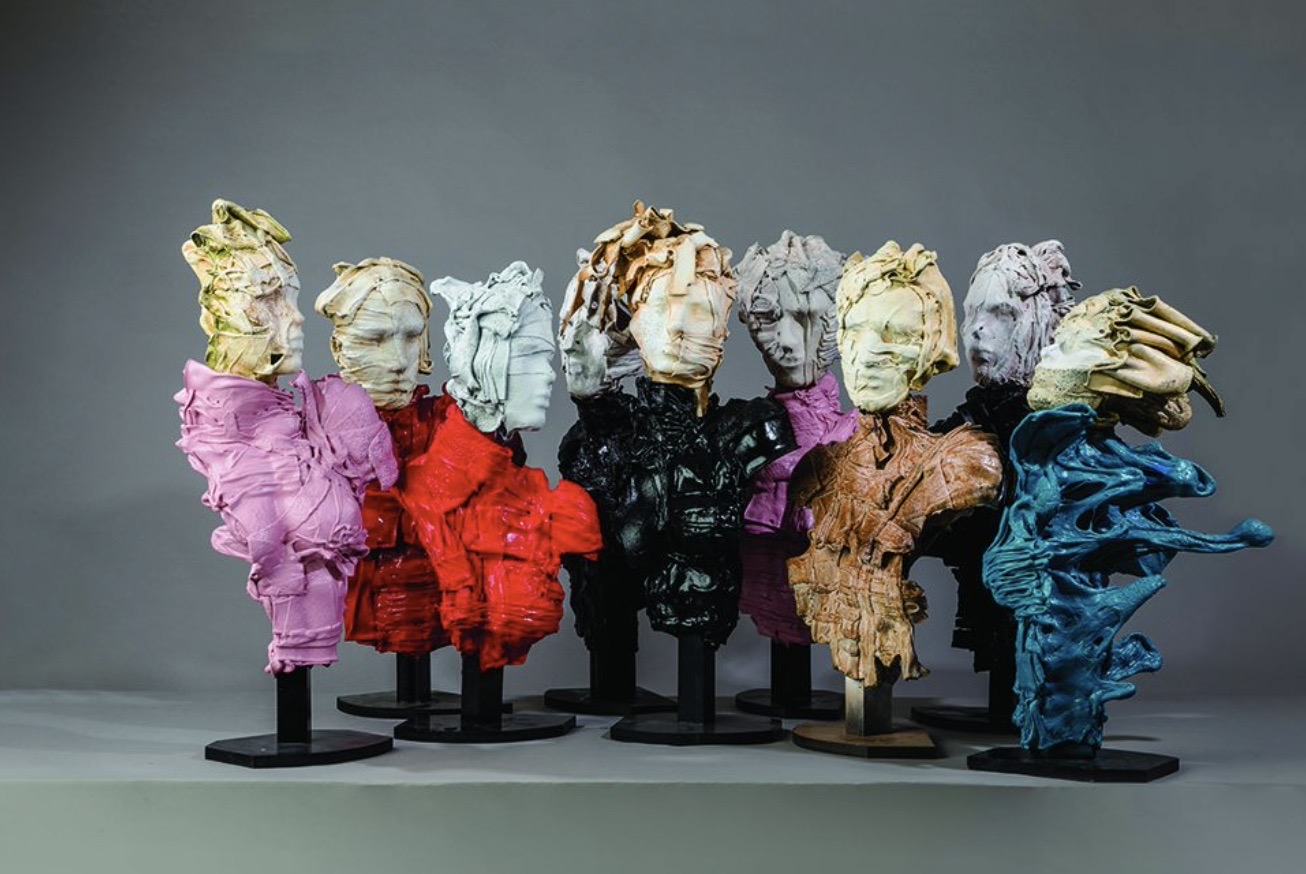
The freedom and flamboyance in Davide’s work is expressed through his own experiences. Growing up in a conservative environment in his own family in the city of Pesaro, on the Adriatic Sea in Italy. Davide compares his brother who was always the best student, to himself and how he struggled in contrast. As a boy he was always illustrating characters and the home was filled with his drawings. He only discovered he was dyslexic when he attended theatre school and learned to read correctly at 25, and from that point on he has been immersed in books. He describes standing out and being different in his youth, dressing differently to the rest of his peers with his new wave style, he made a reputation of himself as being different. Davide explains how his parents thought his behaviour strange, and at the age of 14 when he asked them if he could attend art school, they responded that only people on drugs or gays attended art school. They insisted he attended a technical college, distinguished with its nickname ‘The Last Resort’. He spent five years at the college, and only has three memories of his time, Davide emphasises. I asked him about the three memories; the first, he describes an abandoned boat in the courtyard at school, and how he watched it deteriorate in the five years he was there, a boy at school whom he watched being bullied and he recalls the English teacher who really cared about him who saw something special in him. I asked if he learned anything at the college that inspired or assisted his work as a sculptor, he references the wiring and electronics that he learned and how he has incorporated this into some of his earlier work. “We humans we learn when we fall,” Davide tells me.
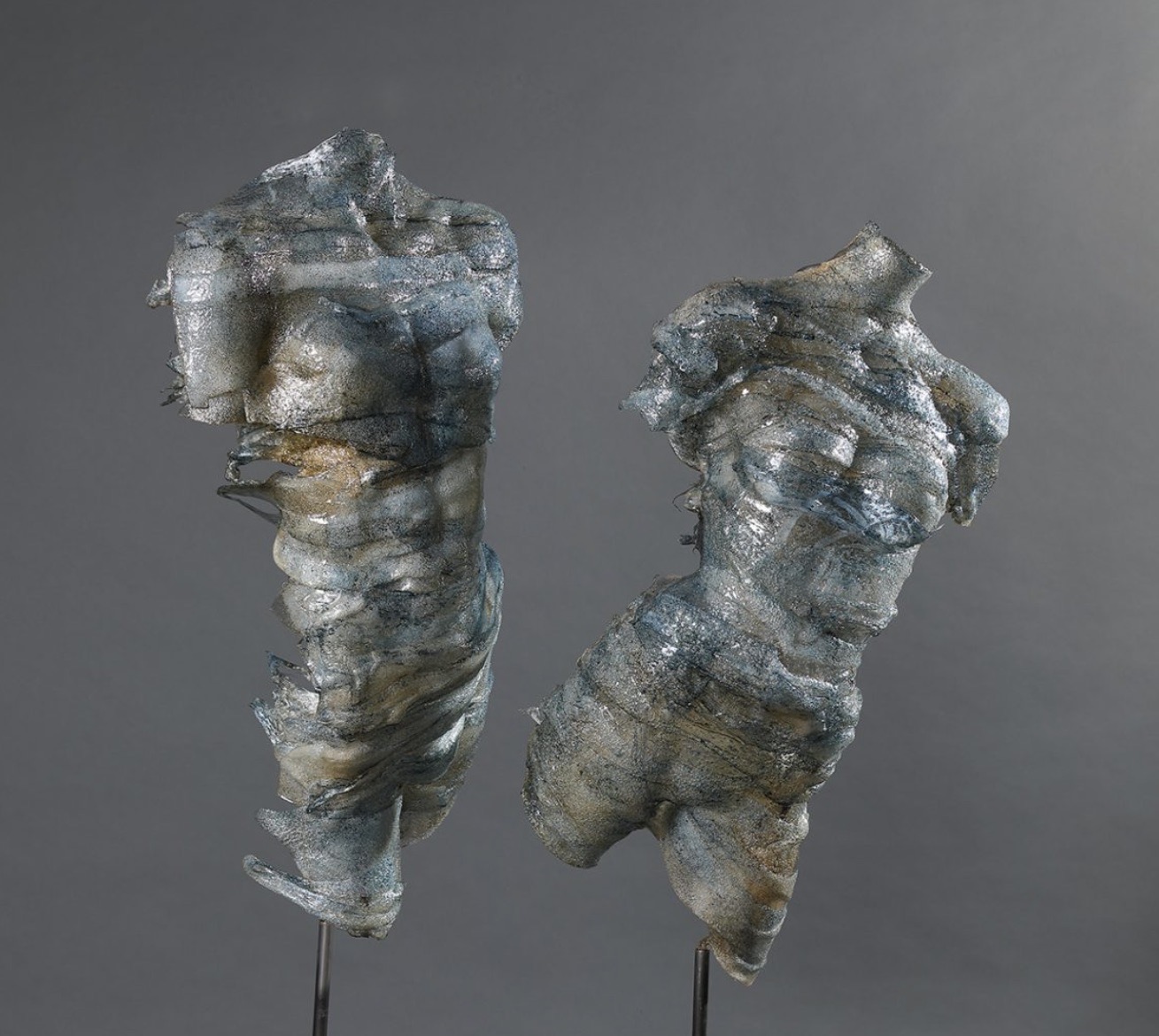
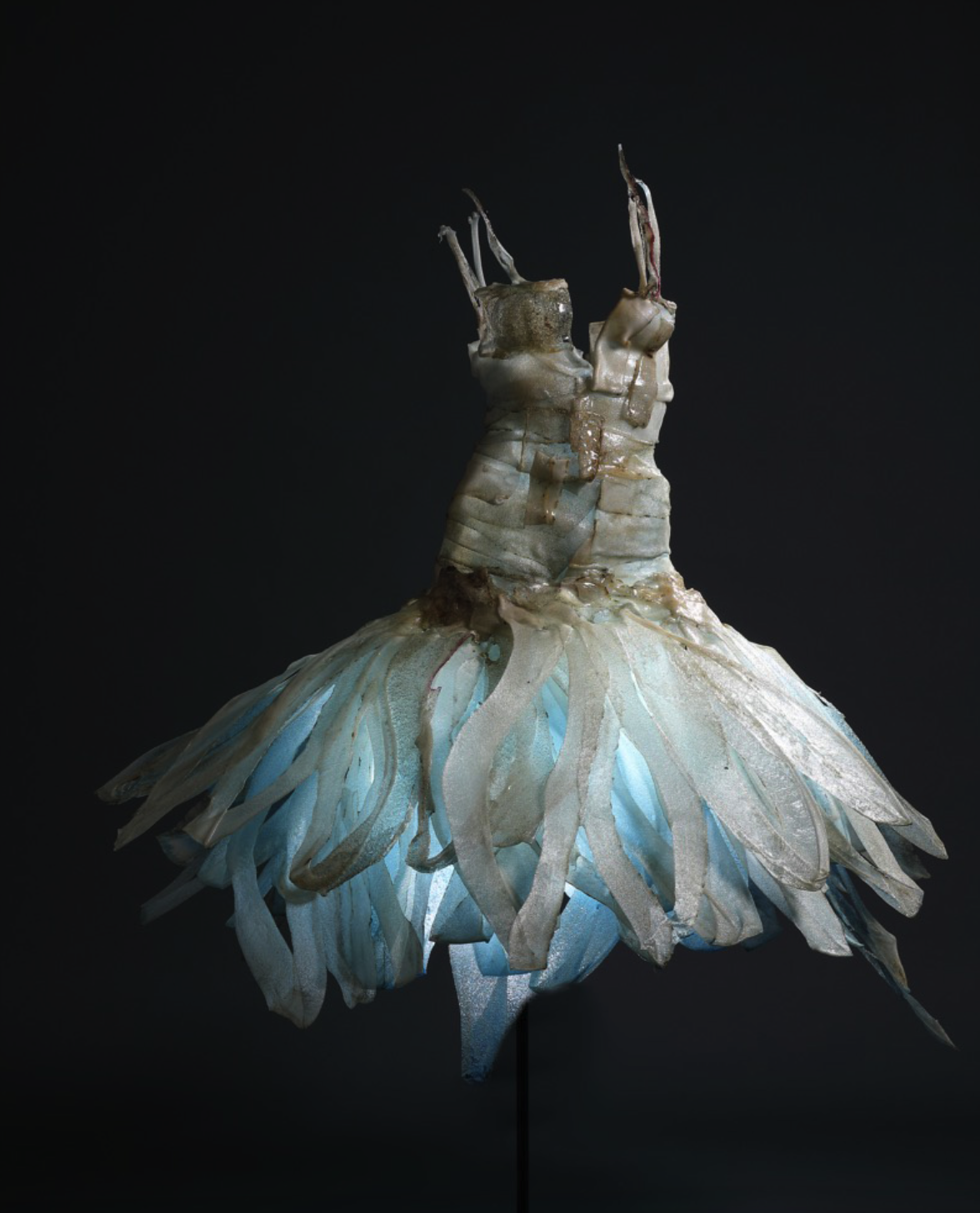
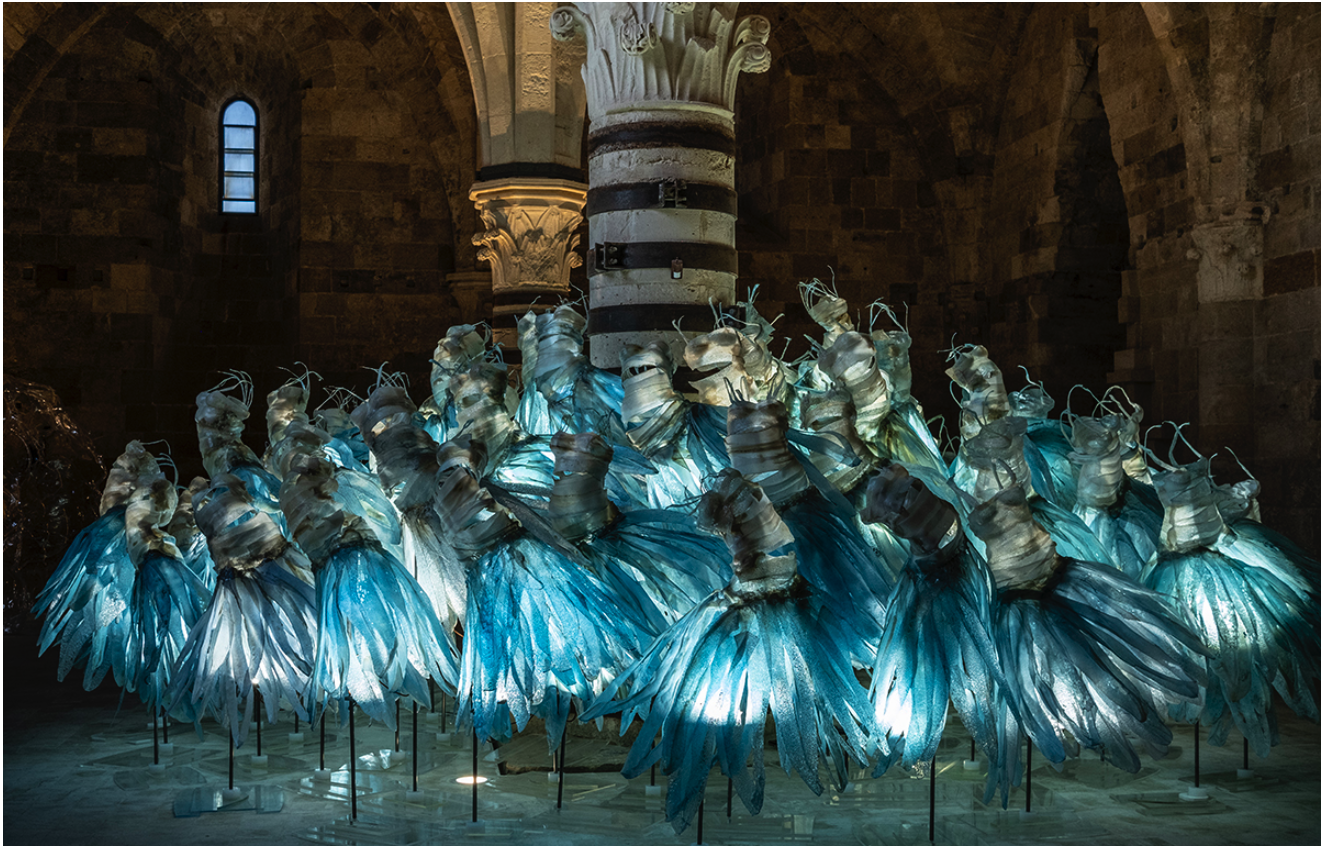
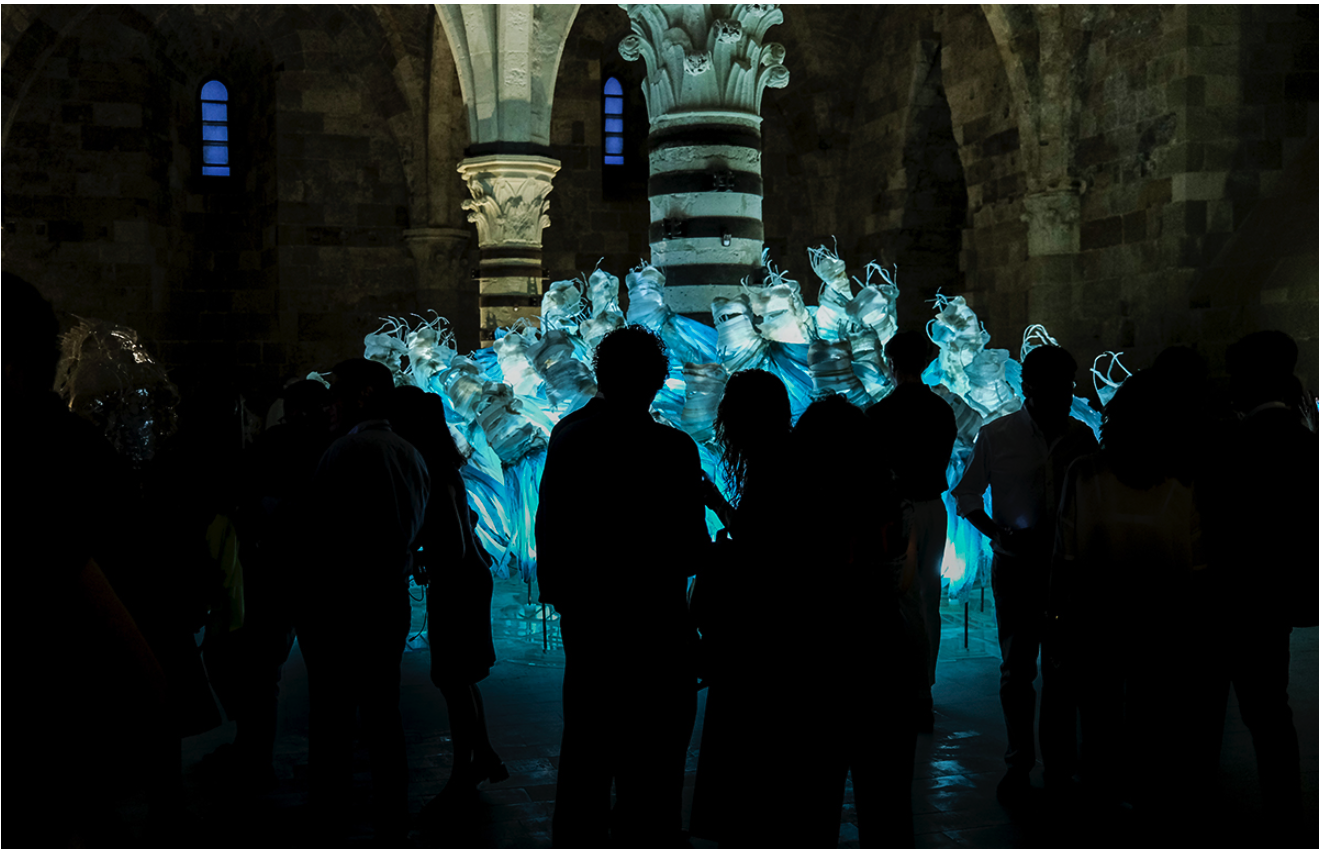
At the age of 16 Davide started to take control of his own life, he started working in nightclubs in the 80s, and his work involved public relations with the clubs. He watched the club’s performances, which varied with their theatrics, with punk bands and singers, he recounts to me what I would describe as performance art. However, at that time he wouldn’t know what to call it, other than theatre. He decided he wanted to be an actor and attend theater school, and this time his parents couldn’t stop him. Davide describes a lucky breakthrough when completing theatre school. He was given the opportunity to work with Columbian director Enrique Vargas, “He didn’t pay a lot, but he paid” Davide tells me. Davide explains how Italian theatre originates from the middle age which consisted of religious dramatizations that took place in the church square, while Columbian theatre has its roots in festivals, markets and street theatre. With this unique style of theatre, Enrique directed his actors to create their own sets within the set of the theatre, as an experience of emergence for the audience, as the actors performed. The performances communicated through movement and the utilising of their own created props. The theatre group traveled the world, and in every city they went through, they were rebuilding the scenery, often using recycled materials and objects and reinventing them as props. This was the beginning when Davide started to experiment with different materials.
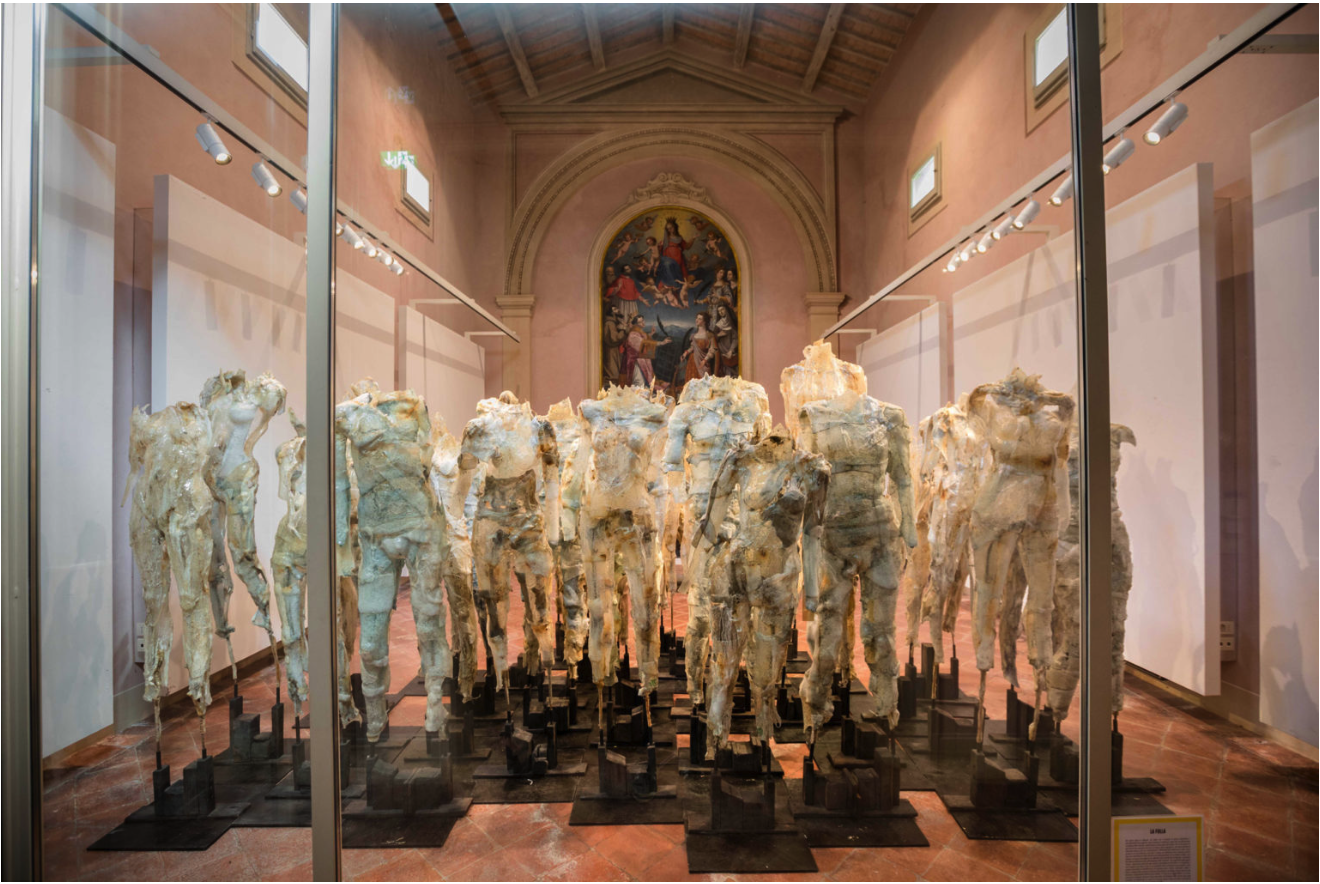



Davide was 24 when he took a break from theatre, he travelled to India and went to live in an Ashram and he noticed that he began to change. However after three months, he became tired of living in India, and during a phone conversation back home with his brother, who informed him of acting courses by director Luca Ronconi. Davide returned home and started working with the director for the next seven years. The job paid well Davide recalls, the last pay check he would have liked to have framed, rather than have cash it in, as he wanted to remember the large sum that he was being paid. Sadly, however, he began to no longer enjoy his career in theatre acting, he recalls how he cried most nights before a performance, and ate two chocolate bars a day. So he started sculpting, he realised many years later that what he learned at the Ashram, something inside of him had changed. Davide recalls the Ashram, being attended by plenty of visitors, many people came to meditate, and he describes how it felt it was more ordinary than extraordinary at the time when he was living there. “Sometimes it felt more intense and one could feel someone looking at you from 300 meters away, all of your senses are tuned up” he recalls.
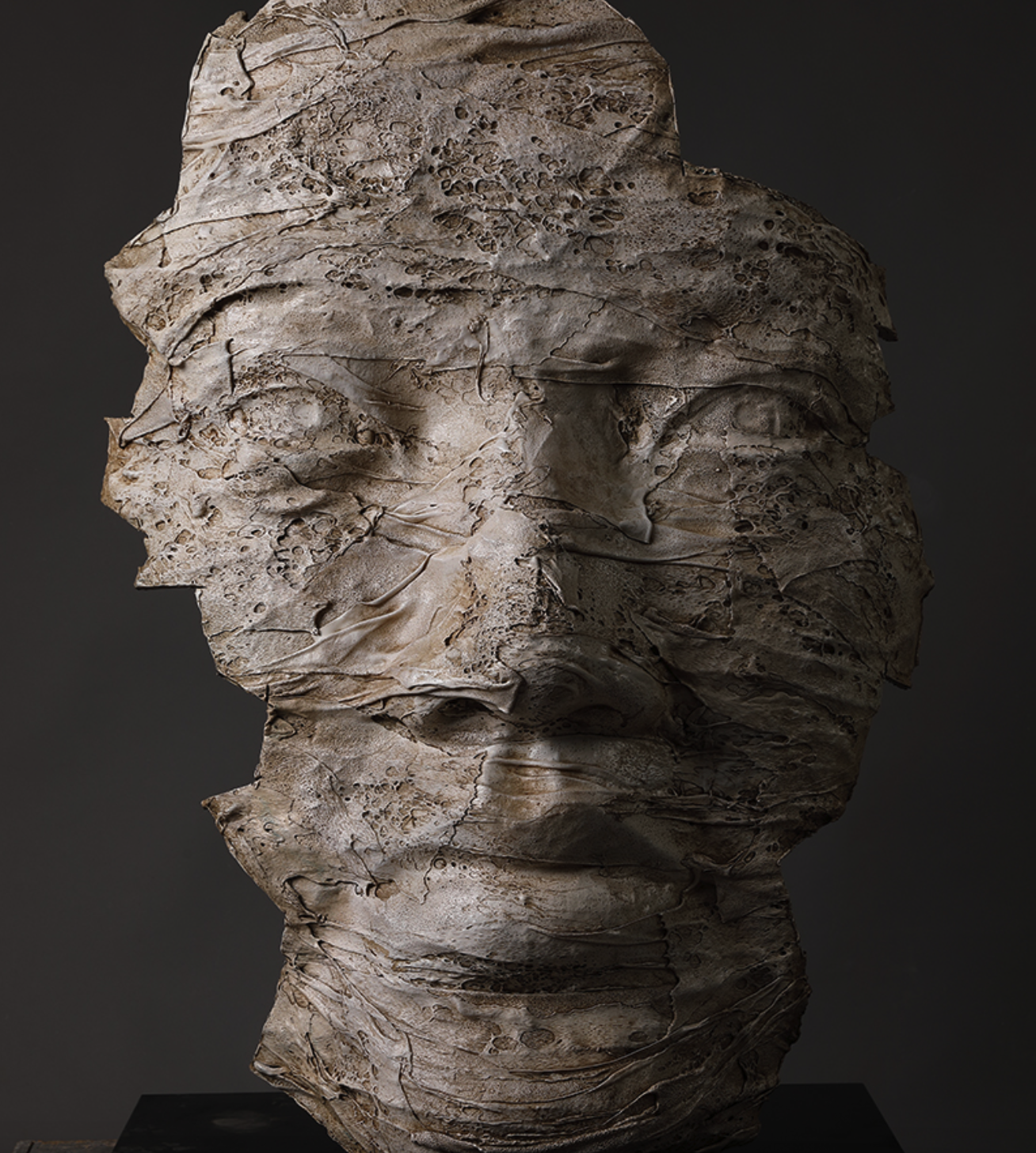
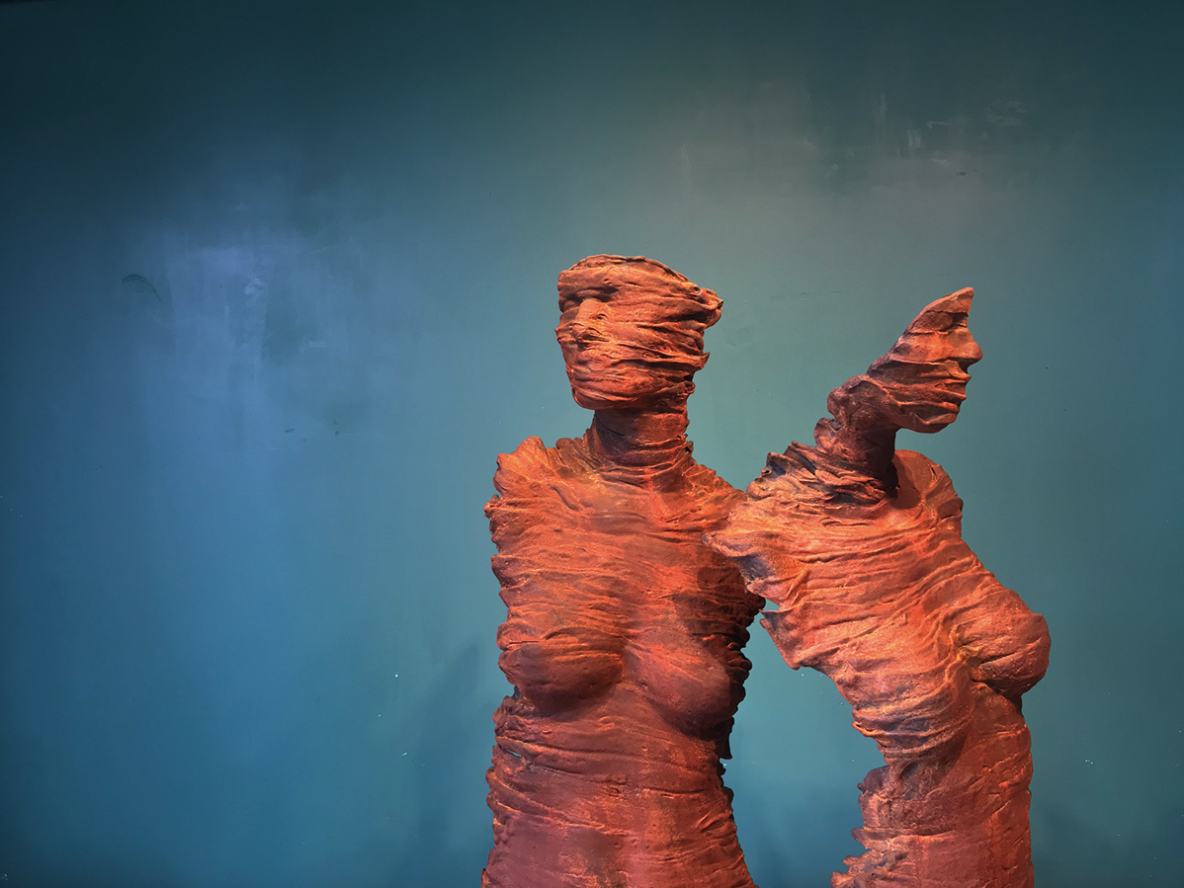

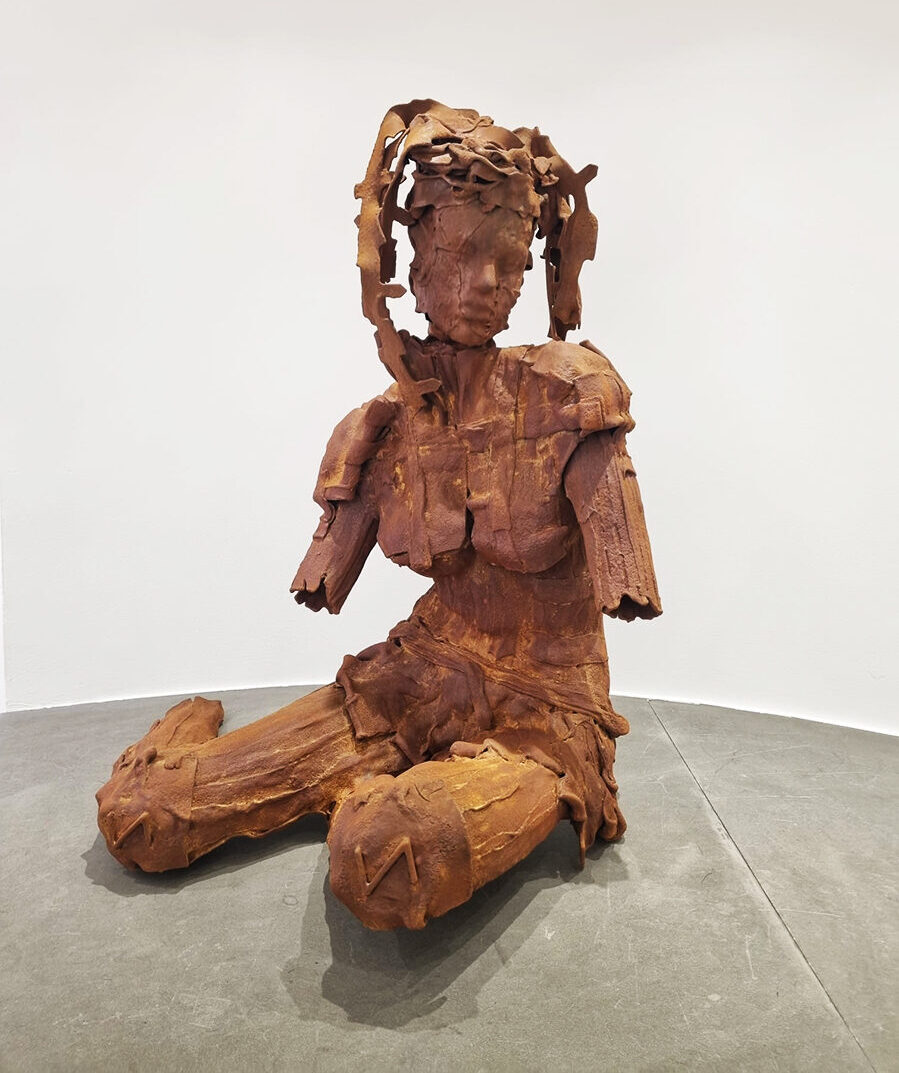
I ask about his transition into sculpting, “I don’t know it just happened” he exclaims. Whilst he was still acting he created his first sculpture, with mesh wire, plastic and other materials he found, it was the transparency of the plastic materials that inspired him the most. Whilst on a break from theatre performances, he went back to Pesaro. His uncle owned a workshop and gave Davide a small space in his warehouse that he could use as his studio. He recalls how his parents thought he was foolish at first. His first body of works were mostly human figures, inspired by the dance and movement in the theatres, at first he worked with wire, which wasn’t as pliable, he used plastic to create movement to these structures, he used the recycled plastic he could find melting it with a blow torch. This would eventually become his trademark style and he began working with polycarbonate, “This plastic doesn’t burn, over 80% of the plastic is recycled, as most plastic is polycarbonate, all the recycled plastic has different reactions to being melted, so the results are never the same” Davide tells me. The outcome of sculptures, reacting differently to the materials he uses. Sometimes Davide works with wind, this is an altogether free effect as the melted plastic reacts to the movement of the air.
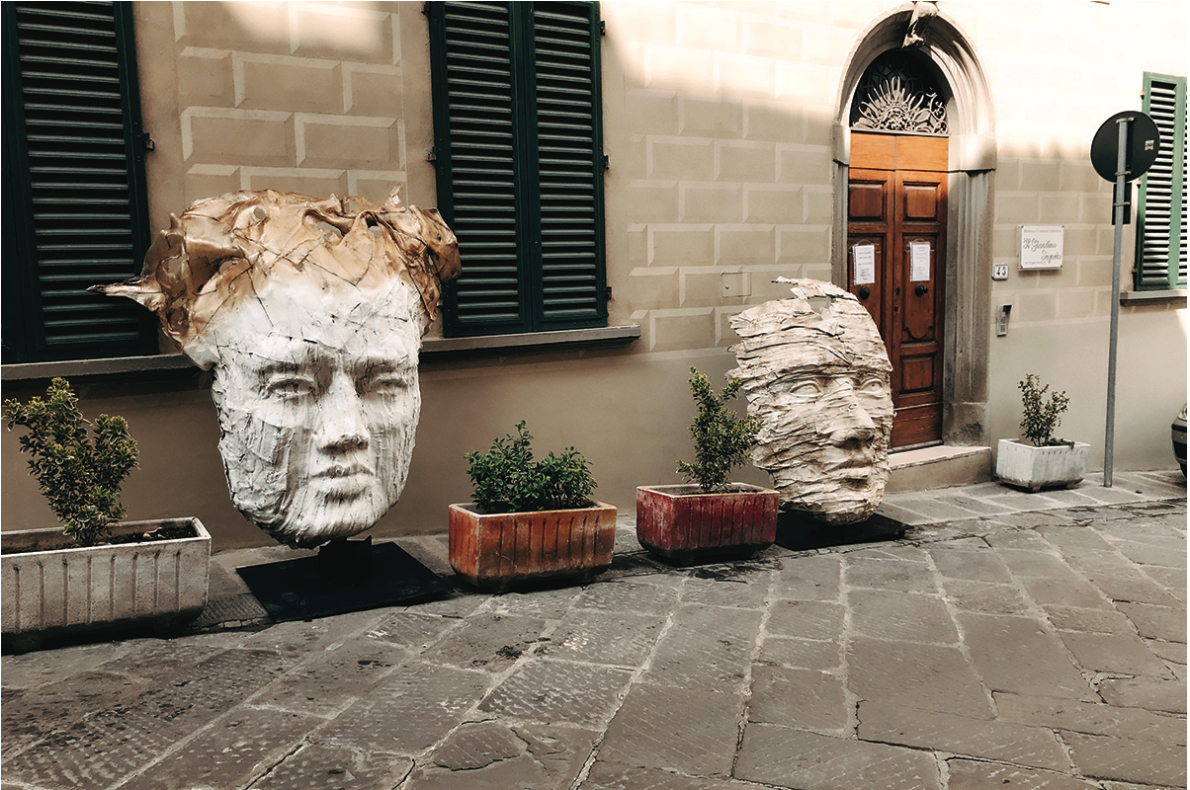
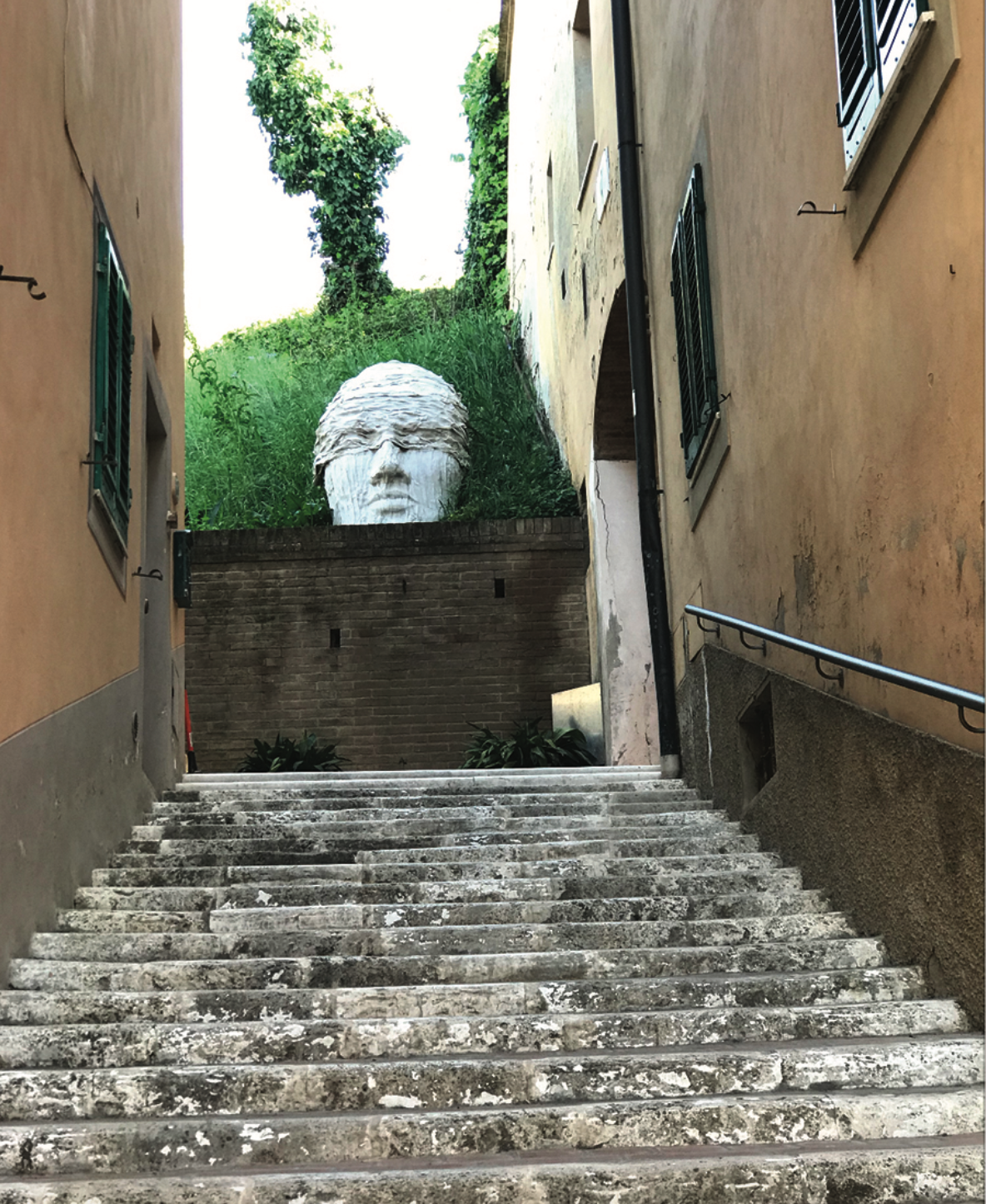
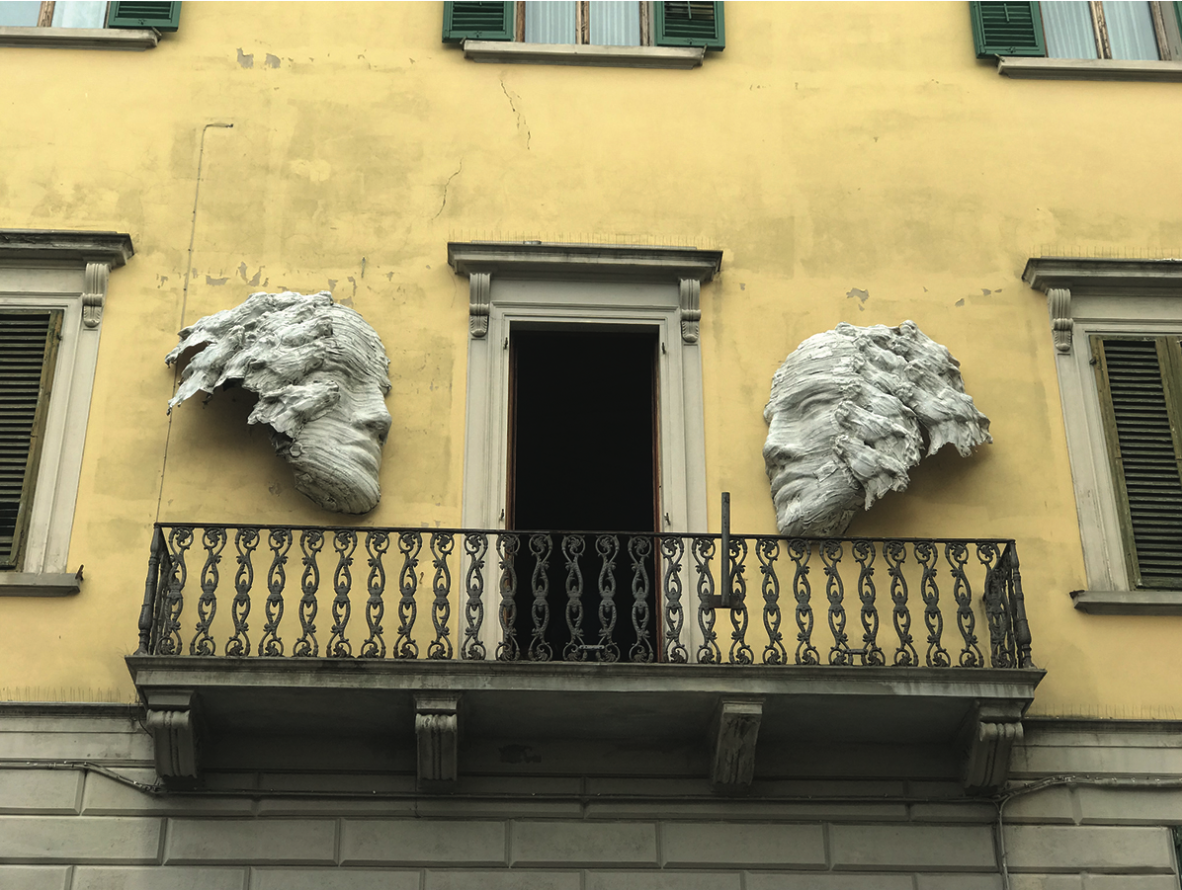
Before 2014 he sold only a few sculptures. In 2014 Davide and his wife Vittoria moved from Milan to Tuscany and opened their company Atelier Dall’Osso. Vittoria manages clients, galleries, administration, graphic design, marketing, PR and social media. Working together they have great results and they have been steadily increasing sales and in 2022 they sold 114 sculptures! He tells me how his parents understand and value what he has achieved. He recalls his father’s “first compliment”, when Davide created his first sculpture of the centaur, his father wondering whether an extraterrestrial had taken over his body, to create the artwork.
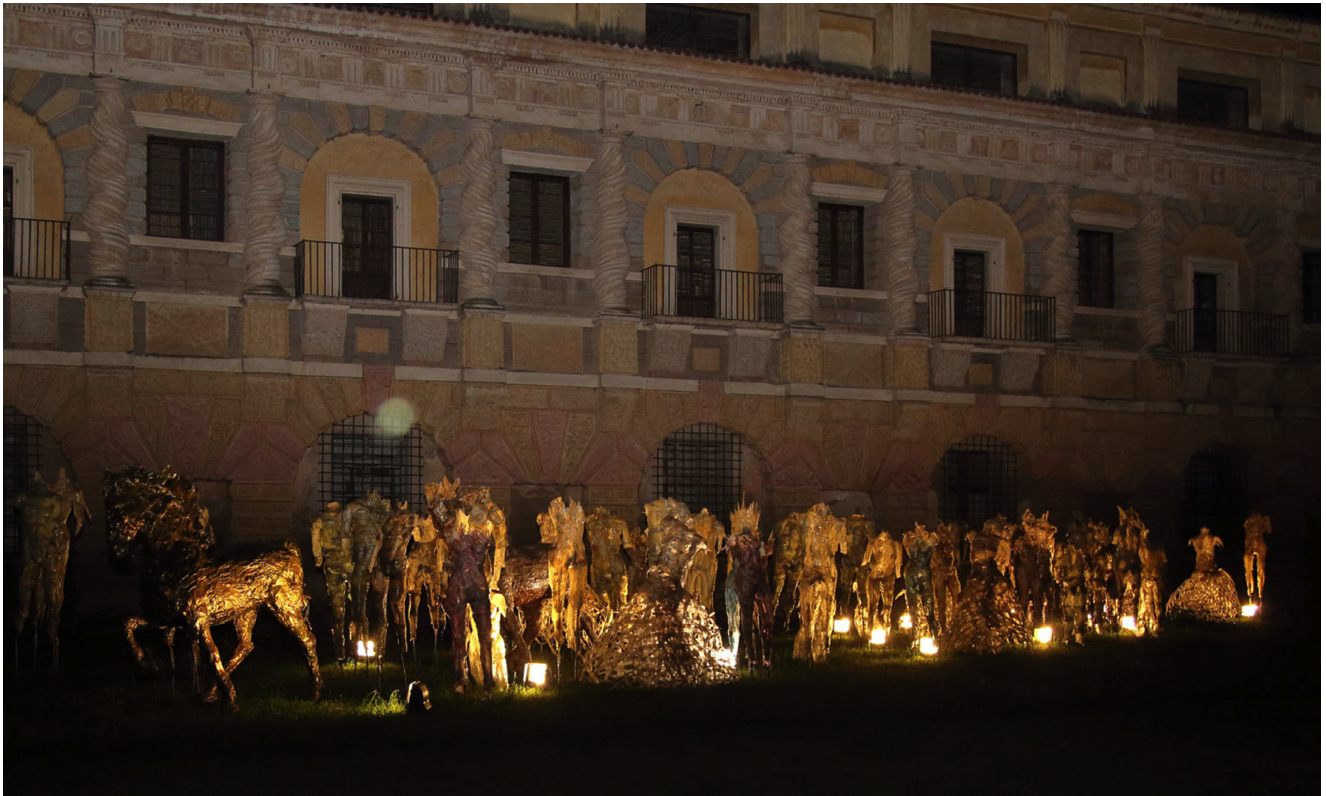

We talk about one of his favourite artists, Alberto Giacometti, he describes his sculptures, expressing how they may not represent movement, however, the textures represent extraordinary movement to him. His inspiration “Freedom” he tells me, “To be what you are” he references his wife Vittoria, and how she has enabled it for him through acceptance. “It’s not exactly easy to feel the freedom to accept who you are and to accept yourself for who you are” Davide emphasises. Then I ask what he considers perfection,”It’s being able to remove the material, but the sculpture can stand on its own, to express the dynamic movement without the body”. If he could have any artwork, what would it be, Triptych the Three Studies for a Portrait of George Dyer by Francis Bacon, or a Kandinsky.
Interview: Antoinette Haselhorst
